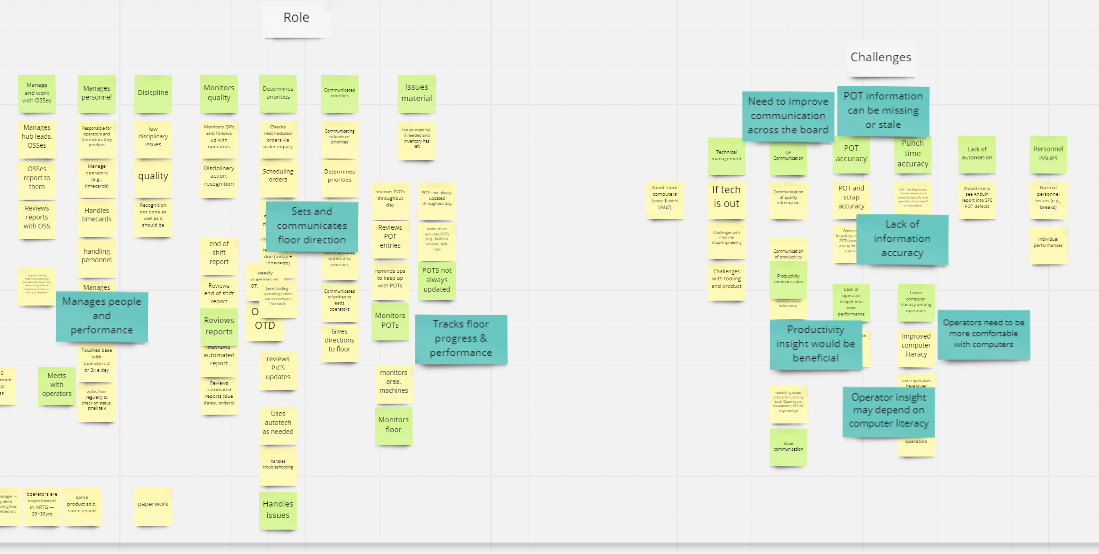PAWS
Samtec used a single system to manage their shop floor. When tracking their work, machine operators would access this system on shared kiosks, which lead to congestion and delayed data entry. Furthermore, there was no system-based means for operators to receive just-in-time information which was especially needed for Samtec’s more complex products’ production areas. PAWS (Productivity and Work System) was proposed as a new application designed specifically for operators to allow for real-time data entry and notification wherever the operator is working.
Research
To get a better understanding of how operators use the systems and how a new system would need to interact with operators wherever they are, I began my research by conducting contextual inquiries of operators at the work stations. I observed operators in nine different production areas across two Samtec facilities. I also interviewed production supervisors and management about managing production areas and what data are needed from operators.

Upon completing this research, I used affinity diagramming to analyze my data. From that, I identified three major themes, which I presented, along with a summary of the research, in a report to project stakeholders.

I also created a flow chart to map out the steps that operators take or need to take to begin and conduct their work. This was used as a basis for the design.
Design
Further analysis of the above flow chart lead to three high-level steps an operator needed perform: finding their work, preparing for that work, and then performing that work. This lead to PAWS having three main screens. Because the transition between these steps is linear and unidirectional, the first screen would also need to serve as a home screen.

For the preparation screen, operators needed to complete a specific set of tasks. These tasks did not need to be completed in a set order nor would all tasks need to be completed for all work. I designed the screen to be based around tabs. To indicate which tabs had a task to be completed, an exclamation icon is shown in the tab. Later usability testing revealed operators thought these were “i” information icons. We switched to hand icons, as these same icons were used on the paper documents they were currently using to indicate they needed to review some information.

The screen for tracking work in progress was the biggest design challenge, as it was a new process. In the old system, operators entered data at the end of their work. In PAWS, they would enter information real time. Further, operators do not necessarily complete one part; instead, they may complete batches of parts. To allow for this, we created a plus-and-minus system of adjusting production totals, and allowed operators to set the quantity by which their totals would by adjusted when using the plus and minus buttons.